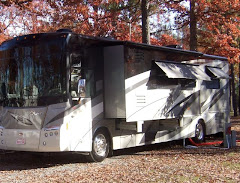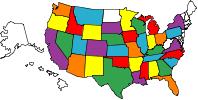
We ventured toward Nashville early this morning to check out the home of Andrew Jackson, the seventh president of the United States. The Hermitage is a 1,000-acre museum and national historic landmark located about 15 miles east of the capital city. The mansion isn't the easiest thing to spot when you arrive at this rural retreat. It sits at the end of a cedar-lined heart-shaped drive.

As we approached the home, a costumed docent explained that Andrew Jackson owned the property from 1804 until 1845. In 1819, Jackson hired a crew of carpenters and masons to build this two-story Federal-style home. In 1831, Jackson had the place expanded and added the massive front columns. The idea was to make the home look more "presidential". Today, The Hermitage is owned and operated by the Ladies' Hermitage Association.

No photographs are allowed inside the mansion, but I was actually standing outside when I snapped this shot of the dining room. The house is decorated to reflect how it might have looked in the years Jackson lived here during his retirement.

Behind the home, a kitchen outbuilding sits to the right. Along the picket fence stands a bell like the one the Jacksons used to call the slaves from other areas on the farm.

At the time of his death in 1845, Jackson owned approximately 150 slaves who provided the labor for this cotton plantation. The slaves were quartered in three different locations on the property. The only slave quarters that remain on the property is known as Alfred's Cabin. Alfred Jackson was an enslaved and later free man who lived at the Hermitage his entire life.

A one-acre formal garden next to the house is planted with iris, peonies and other annuals that were available in the first half of the 19th century.

Jackson and his wife Rachel are entombed in a corner of the garden. The graves of other family members are nearby.

Just a few steps from the Jackson tomb sits a small, simple tombstone marking the grave of "faithful servant" Alfred, whose cabin is shown above. Alfred lived at The Hermitage longer than anyone. When the house opened as a museum, Alfred was the first tour guide. He died in 1901 at age 98, and his funeral was held in the center hall of the mansion. Standing here we wondered what a story Alfred might have told about his century of change in this peaceful place.






No comments:
Post a Comment